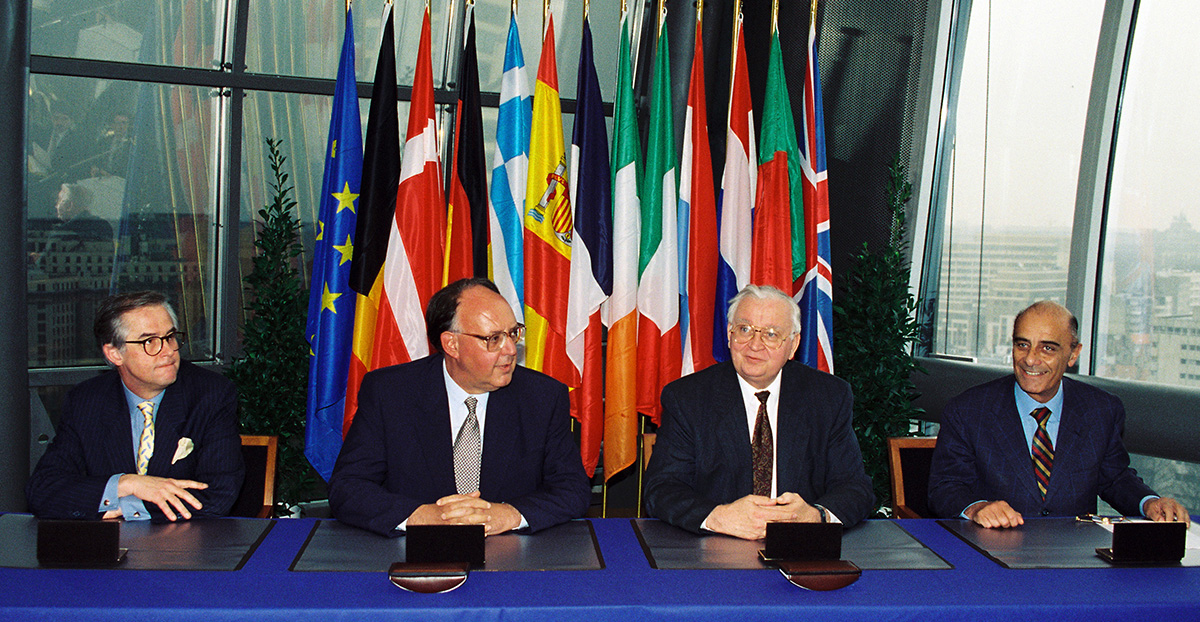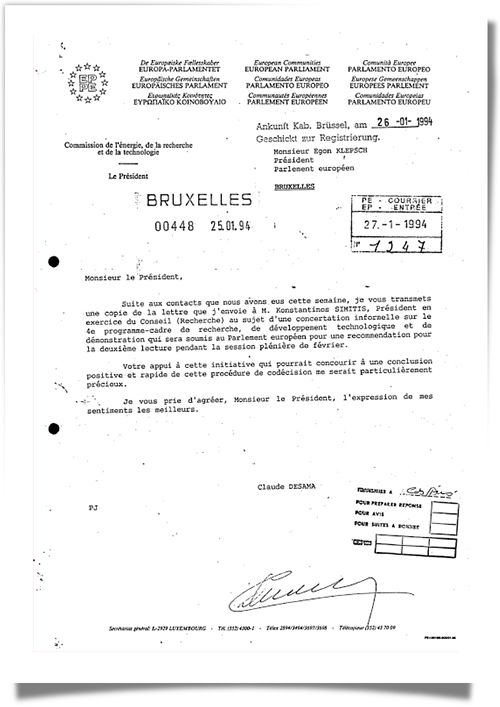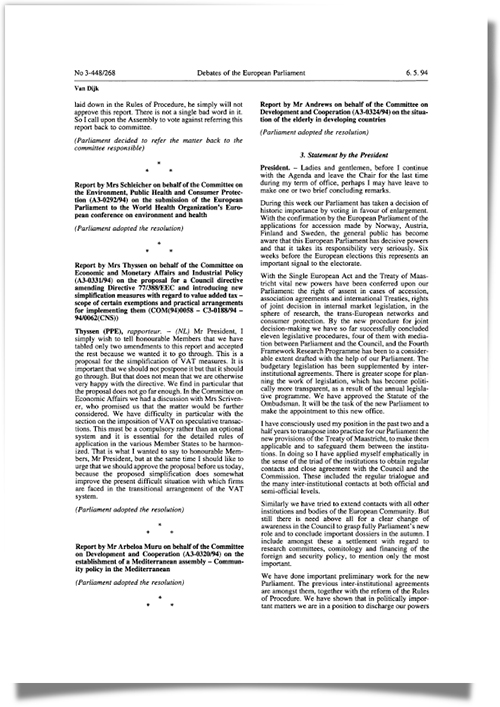The European Parliament’s powers increased significantly with the entry into force of the Maastricht Treaty (Treaty on European Union - TEU). The Parliament decisively changed from being a parliament with essentially a purely advisory role to being a co-legislator.
In the time Klepsch was President, many steps were taken towards strenghtening the role of Parliament as a co-legislator. The new codecision procedure was set up with the establishment of a joint conciliation committee. Eleven legislative procedures were completed, four of which were the result of Parliament-Council conciliation agreement. The procedure, as designated by the first Treaty did not fully satisfy Parliament, which complained on numerous occasions that it did not place the Council and Parliament on an equal footing. Nonetheless, it was proof that a significant step forward had been taken in extending Parliament's legislative powers. As President, Klepsch was particularly anxious that the right to codecision should be successful when put into practice, so that an extension to the scope of codecision could be contemplated at a later date.
 Ceremonial signing of Council - European Parliament codecision. From L-R: Council Secretary-General Niels E. N. Ersboll, Greek Deputy Minister of Foreign Affairs Theodoros Pangalos, President of the European Parliament Egon Klepsch, European Parliament Secretary-General Enrico Vinci © European Union
Ceremonial signing of Council - European Parliament codecision. From L-R: Council Secretary-General Niels E. N. Ersboll, Greek Deputy Minister of Foreign Affairs Theodoros Pangalos, President of the European Parliament Egon Klepsch, European Parliament Secretary-General Enrico Vinci © European Union
Parliament was thus able to sign an interinstitutional agreement on the implementation of acts adopted under the codecision agreement that satisfied its own requirements.
The first legislative act adopted under the codecision procedure was solemnly signed on 23 March 1994. In the speech he gave on this occasion, Klepsch said:
“The current legislative programme includes nearly 100 procedures that must pass through the codecision process. What today seems to us to be sufficiently important to warrant a public ceremony will tomorrow form part of our routine legislative procedure. We had a goal: to anchor the new codecision procedure firmly into the ordinary course of events during this legislature. We have achieved this.”

To ensure codecision was put into practice, President Klepsch initiated and encouraged informal meetings to make progress on dossiers. He regularly resorted to ‘trialogues’ between the heads of the Council, the Commission and Parliament and, to avoid scheduling problems, arranged working lunches attended by not just the presidents, but also the heads of their offices and the secretaries-general. Core problems would be discussed at these meetings as well as topical issues. This method of collaboration worked very well throughout his term in office.

In his final address at the end of his term of office, President Klepsch said of this collaboration:
“In doing so I have applied myself emphatically in the sense of the triad of the institutions to obtain regular contacts and close agreement with the Council and the Commission. These included the regular trialogue and the many inter-institutional contacts at both official and semi-official levels.”

President Egon Klepsch's end-of-mandate speech (Download the document here - PDF)
